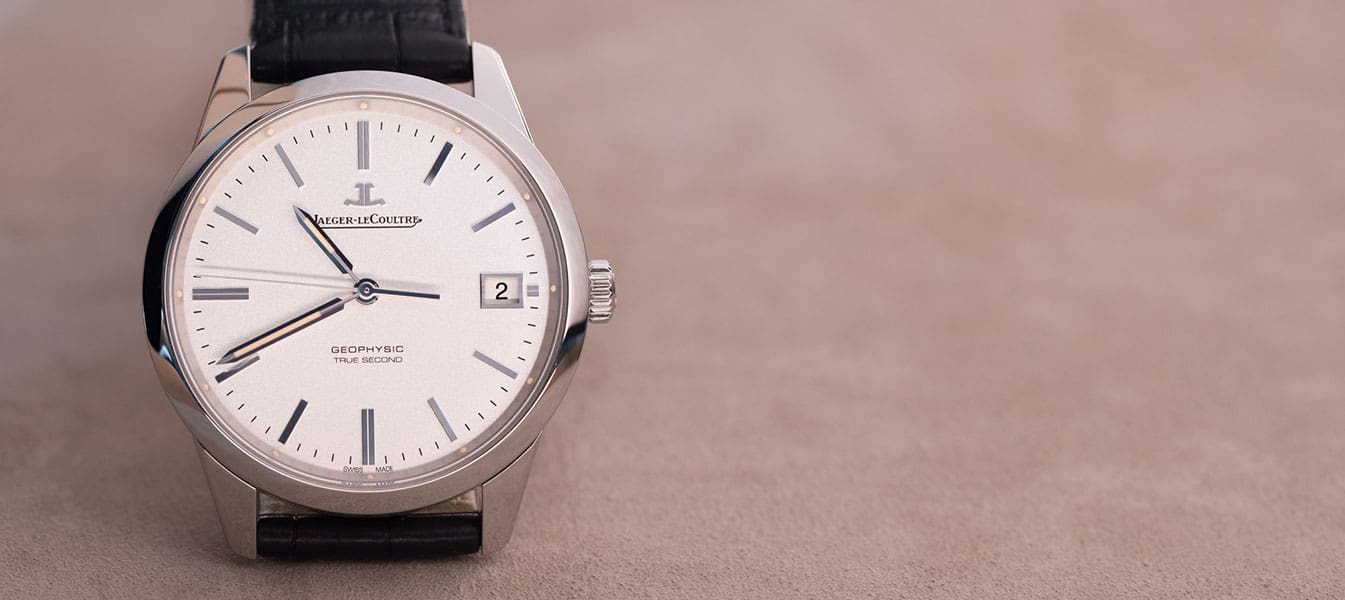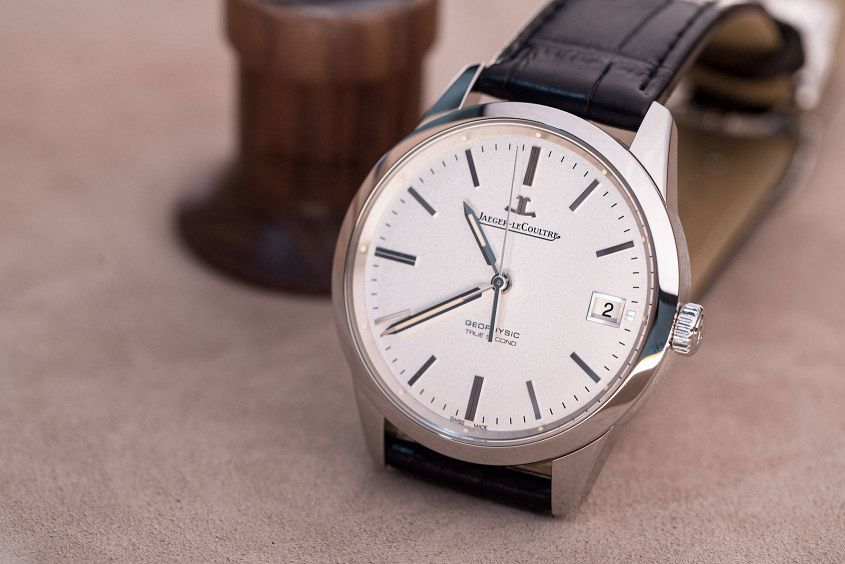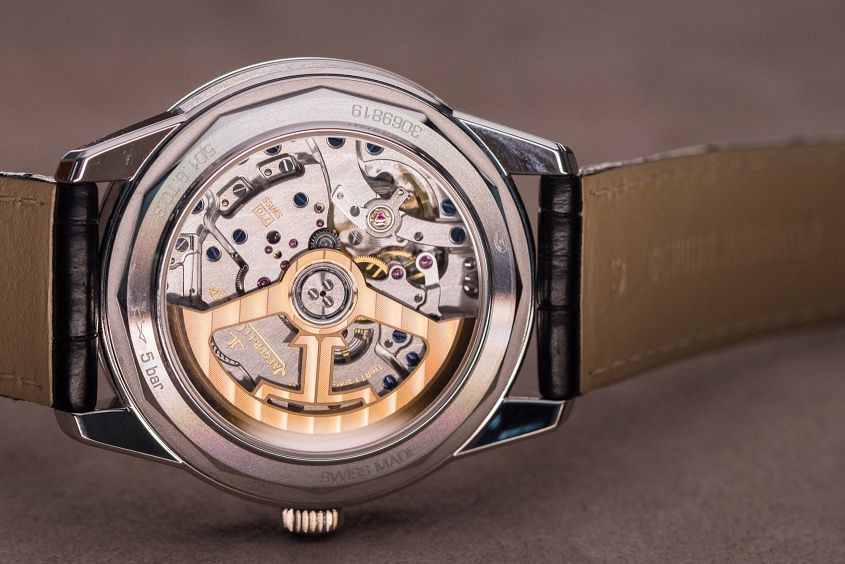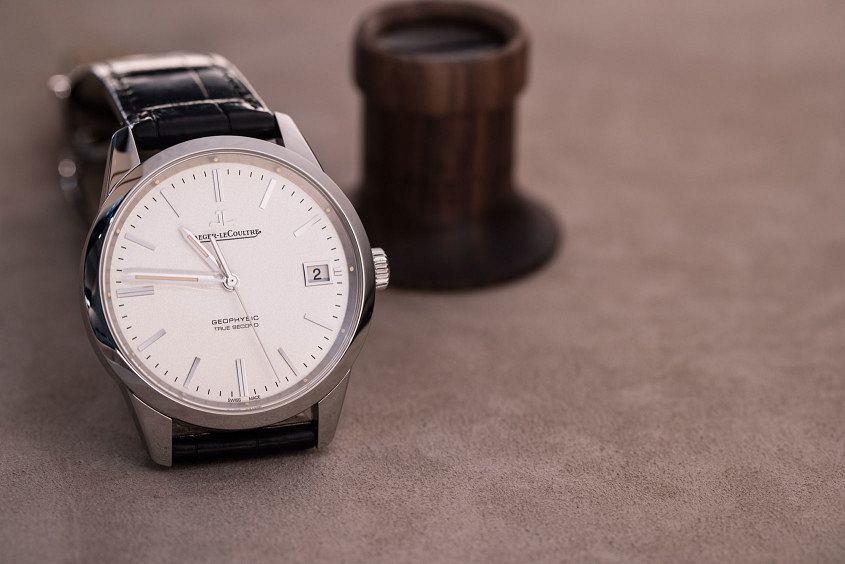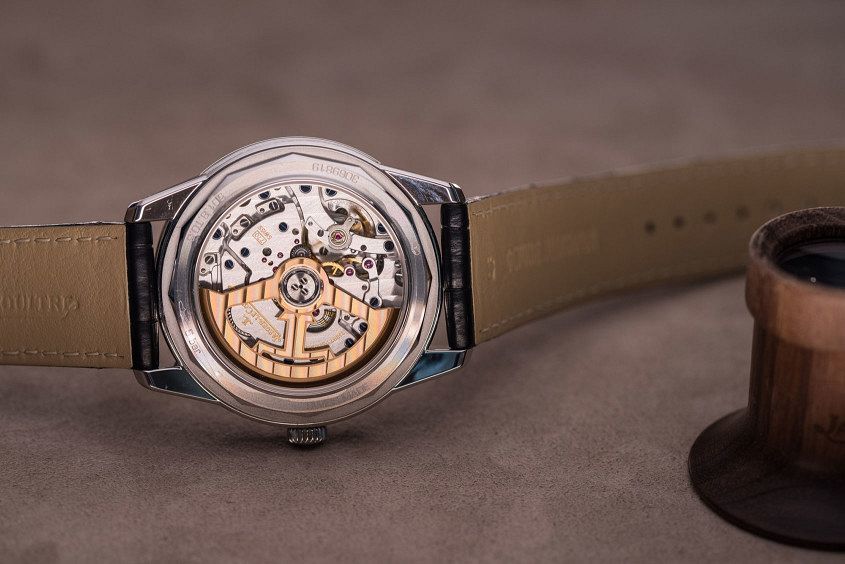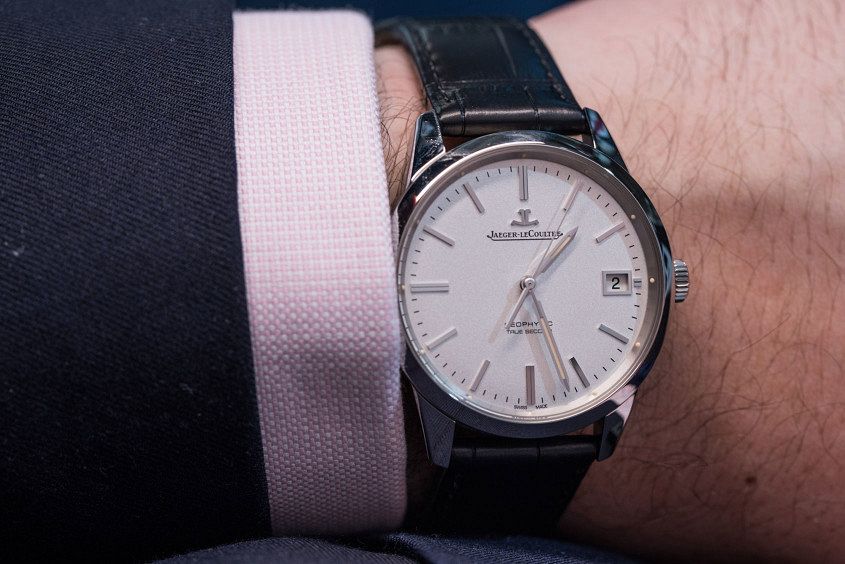HANDS-ON: The Jaeger-LeCoultre Geophysic True Second
Felix ScholzFor a brand like Jaeger-LeCoultre that’s renowned for slender and refined timepieces, this year’s focus on the utilitarian Geophysic represents a slight – but significant – change of course.
Originally released in 1958 as an extremely precise scientific instrument, the Geophysic was first reissued in 2014, to unanimous acclaim. The latest version – the Geophysic True Second – honours this spirit and builds on it, marking an important evolution of the collection.
Visually, it’s a simple, round, 39.6mm watch that sits a comfortable 11.7mm high, cased in brushed and satin steel. The dial is completely new; gone are the sword hands and Arabic numerals of the 2014 model, replaced with baton hands and long, mirror-finished hour markers, with small lume plots and a date at three. Many people would be happy enough with this well-finished, clean and versatile watch as is – but these days it’s not enough for a steel watch to be simple. It needs that little something extra to separate it from the pack. In this instance, that something extra is the second hand.
Fine watch lovers will notice straightaway that this second hand lacks the smooth sweep that’s the hallmark of a mechanical movement, instead jumping in assured, single-second increments just like a quartz watch. But turn it over and batteries are clearly not included. Rather, you’ll find yourself staring down the beautifully finished barrel of the Calibre 770. This highlights everything that’s great about modern JLC – in-house, impressively finished (note the new rose gold rotor) and highly technical. At the heart of this movement is the True Second function – JLC’s take on the classic dead-beat seconds – that gives the watch its tell-tale tick. This complication allows for extreme accuracy in reading the seconds, and is historically found on watches intended for scientific use, so its inclusion in the Geophysic is entirely apt. Uniquely, JLC have used a second hairspring to make the seconds tick, which has the benefit of not compromising the long-term accuracy of the movement. But that’s not all. JLC have also introduced into the movement a highly efficient asymmetrical balance wheel called the Gyrolab. The product of eight years’ development, the Gyrolab was first seen in their highly conceptual Master Compressor Extreme Lab 1, and makes its full-scale commercial debut in the Geophysic. Expect to see this tech filter into other JLC collections over time.
While these technical features mean you can be confident in the chronometric capabilities of the True Second, it also boasts a few user-friendly features. You can easily adjust the hours independently of the minutes and seconds, and the date will automatically adjust both forwards and backwards as you change the time. A boon to frequent flyers, this might seem like a simple feature, but trust us, it requires a lot of technical know-how.
The Geophysic True Second is an important watch for JLC. In fact, the entire collection is significant. As a brand with excellent dress collections and some great contemporary sports pieces, until now they’ve lacked a compelling middle ground. The Geophysic joins those dots, speaking to the quiet confidence and technical capacity that define JLC, and neatly tying in the brand’s prestigious history.
Jaeger-LeCoultre Geophysic True Second Australian pricing and availability
The Geophysic True Second in steel has an RRP of $11,400 and in pink gold an RRP of $22,000.




